Author: Jiho Kim | S2W TALON
Last modified: May 12, 2022
 Photo by Ranae Smith on Unsplash
Photo by Ranae Smith on UnsplashIntroduction of BlackGuard Stealer
With the recent rapid expansion of the blockchain market including NFTs, cybercriminals are mainly using info stealer malware to steal credentials and wallet data stored in personal PCs. In addition, as it is known that the LAPSUS$ group, which has recently performed data breaches against large enterprises around the world, has mainly used credentials stolen from info stealer malware, the risk to Stealer is rising significantly compared to the past.
Info stealer malware is a type of malware that steals credentials and sensitive information from an infected PC and there are various stealers such as RedLine, Raccoon, and Vidar. S2W recently conducted and published an analysis of BlackGuard Stealer, which is being actively promoted in the DDW forum. In addition, as it has been confirmed that a new version is being distributed, we would like to organize and disclose the history of BlackGuard Stealer.
Timeline of BlackGuard Stealer
The operator who develops and sells BlackGuard Stealer uploaded the first promotional post about BlackGuard under the title “New Stealer” on XSS, a dark web forum, on March 21, 2021. However, the post was closed for not sending a deposit for sale, and the additional promotional post uploaded on April 8, 2021, about a month later, was also temporarily suspended for the same reason. After that, there was no activity related to the BlackGuard Stealer, but in January 2022, the activity started in earnest by sending a deposit and testing the product. The BlackGuard Stealer operator and developer had sold a loader program called RunPE before selling Blackguard.
According to a first promotional post published by BlackGuard operators in March 2021, the initial version of BlackGuard had borrowed some code from open-source ‘StormKitty’. However, in addition to this, it was confirmed that the code of BlackGuard is similar to that of ‘44Caliber’ and ‘Echelon Stealer’. It can be seen that the BlackGuard operator initially referenced a part of the code from several known info stealers, but is changing the internal structure little by little through periodic version updates.

Complaints to BlackGuard Stealer Operators
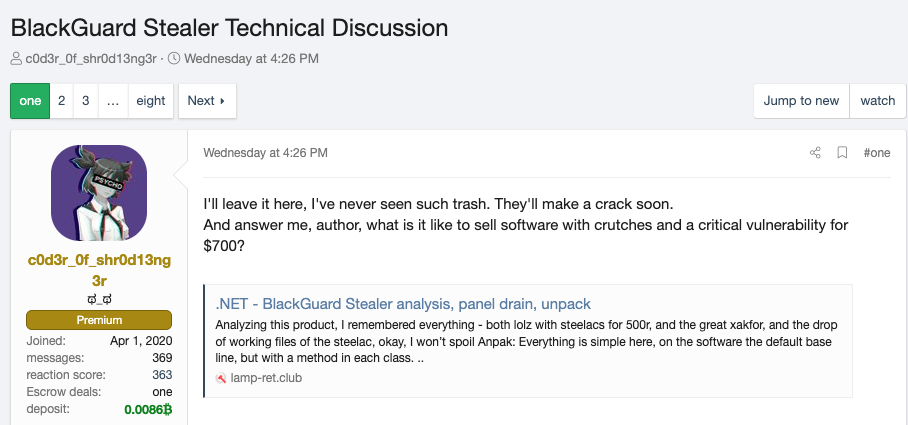
Currently, Black Guard is receiving a lot of criticism from the XSS forums where they uploaded a promotions post. The permanent version of BlackGuard is sold for $700, and one user claimed that the promotional content claimed by BlackGuard was different from the actual behavior. In fact, BlackGuard chose to exit rather than bypass after checking anti-debugging. Also, there are some functions that do not work properly.
Moreover, there is a vulnerability in the admin panel, and it is said that someone has already taken it. Since then, the source of the panel has been leaked and we are now looking for additional vulnerabilities.
Since these claims have been made, many users have been demanding a reasonable standard for why it is priced at $700 and a user said 500 rubles is a reasonable price. As mentioned by users, BlackGuard actually borrowed the source code of ‘Stormkitty’ and ‘44caliber’, the panel code of ‘Evryal Stealer’, which he admitted. However, he claimed that he only borrowed some code, and has rewritten it himself, continuing to assert that there is nothing wrong with it.
One user has been demanding a refund after this argument, claiming that he has been scammed.
Summary of comparison

The BlackGuard versions mentioned in this report are v1.x, v2, v2.4, and v3.5, and the sample released in early April 2022 seems to be a completely early version of BlackGuard, and now not only has the increased items to steal, but the C2 communication method has also changed.
As BlackGuard started specifying the exact version from v2, samples found before that version were considered v1.x. In particular, v1.x mentioned in this report is an early version of BlackGuard. In particular, in this report, v1.x is treated as the early version of BlackGuard, but there are some differences in the items collected compared to the later version of v1.x. However, since the items collected in late v1.x and v2.x are the same, v1.x is referred to as v2.x
In the v2 and later versions, the target items to steal have changed, such as Wallet Extension on Browser, Messenger software, and some FTP credentials have been added to the target items, and ProtonVPN is completely excluded from the target. In addition, while all the stolen information was leaked through v1.x Telegram bot API, from v2.x, the information is leaked through the C2 URL encoded inside the BlackGuard.
BlackGuard v2.x and v3.5 have no significant difference in the target items except for the file size. This is because, as BlackGuard was updated to v3.5, the ‘SQLite.Interop.dll’ library, which was used to collect credentials stored in the browsers, has included it as a resource without downloading from the external server. In addition, there is a characteristic that the XOR-ed Data Table changes for each major version.
Comparison of BlackGuard’s execution flow
- BlackGuard v1.x
- Download and run BlackGuard Stealer disguised as legitimate software
- Decoding configuration data and stealing sensitive information
- Anti-Debugging
: Check the existence of DnSpy, a tool often used for C# malware analysis, and whether it is currently being debugged
4. Save the collected information and infected device information in the ChikenDir folder
5. Compress the ChikenDir folder into a zip file
6. Send the zip file via Telegram API
- BlackGuard v2.x & v3.5
- Download and run BlackGuard Stealer disguised as legitimate software
- Decoding configuration data and stealing sensitive information
- Check the country of the infected device and if it has been infected with BlackGuard
- Anti-Debugging
: Detects whether the environment in which BlackGuard is executed is a sandbox environment, checks the existence of Anti-Virus Product, and is being debugged
5. Load the SQLite.Interop.dll library to be used to steal credentials on browsers
6. Save the collected information and infected device information in the temporarily created folder
7. Compress the folder where the collected information is stored into a zip or rar file
8. Send the zip file to the C2 server using HTTP/HTTPS protocol


Comparison of detailed behaviors by BlackGuard version
1. Decoding Data
BlackGuard Stealer contains XOR-ed data inside a specific class used for stealing credentials and sensitive information, and each version has a different data or decoding method.
- BlackGuard v1.x
In BlackGuard v1.x, data is stored in string format with Gzip compression and Base64 encoding.

- BlackGuard v2.x & v3.5
From BlackGuard v2, XOR and Base64 encoding are applied instead of Gzip, and all encoded data is stored in a Data Table. In the constructor of a specific class, XOR is performed on all data, and whenever each data is used, the required data is extracted as much as the length from a specific offset position. Occasionally, additional Base64 decoding is performed for some strings. The same data is commonly found for each version of BlackGuard: v2.x uses Type C, and v3.5 uses Type D.

All BlackGuard versions have a Data Table containing XOR-ed strings, and it has been confirmed that there are always included parts for each type. There are four major types of Data Tables identified so far, and it was confirmed that the types of data tables change as the version is updated.
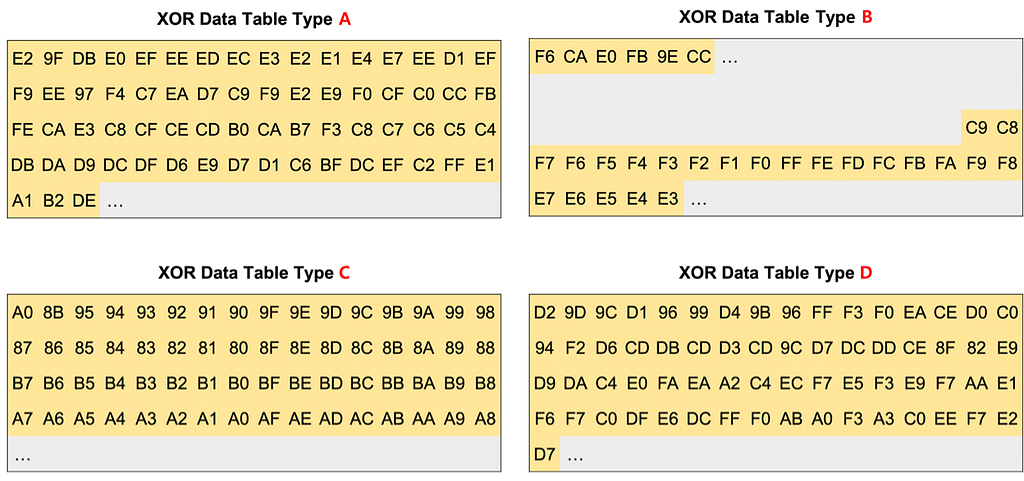
The following is a summary of the Data Table Type and C2 specification method for each BlackGuard sample.

2. Check country & Identify infection
Compared to BlackGuard v1.x, BlackGuard v2.x and v3.5 added features to check the infected device’s country and identify infection with BlackGuard. If the country of the infected device matches one of the lists below, the execution is terminated.

In addition, by checking whether a specific folder exists in the infected device, it does if it is already infected, and the folder name for identifying the infection appears differently depending on the sample.
- %LOCALAPPDATA%\YRplay.tmp
- %LOCALAPPDATA%\play.tmp
- %LOCALAPPDATA%\poet.nuee
- %LOCALAPPDATA%\monthteam.inc
- %UserProfile%\Documents\rgeEtjhgjg.txt
3. Virtualization/Sandbox Evasion
In BlackGuard v1.x, the existence of DnSpy and current debugging were checked, but after BlackGuard v2, the Anti-Debugging check process has changed. Now, it checks whether the execution is performed in the sandbox environment and whether the AntiVirus Product is installed. This is done by checking whether a specific library exists in the infected PC environment, and if a related library is detected, BlackGuard terminates itself. The list of libraries detected by BlackGuard is as follows.

4. Utilize SQLite.Interop.dll
Information such as login accounts, cookies, and web history stored in the browser that BlackGuard collects, is stored in the form of SQLite Database in the installation path. In the case of v1.x, after copying the database file, the accounts and cookie values in the file are extracted using the DPAPI Decrypt function.
However, after v2, it has changed to a method of directly reading the database by using SQLite.Interop.dll. At this time, the method of loading SQLite.Interop.dll is different between BlackGuard v2.4 and v3.5.
BlackGuard v2.4 downloaded SQLite.Interop.dll file using WebClient.DownloadData() function from external C2 Server, whereas BlackGuard v3.5 downloads the library file from the C2 Server is removed and has included in the resource to be used by calling in the stealing function. It is assumed that this is to prevent being detected by AV in the process of downloading the library.
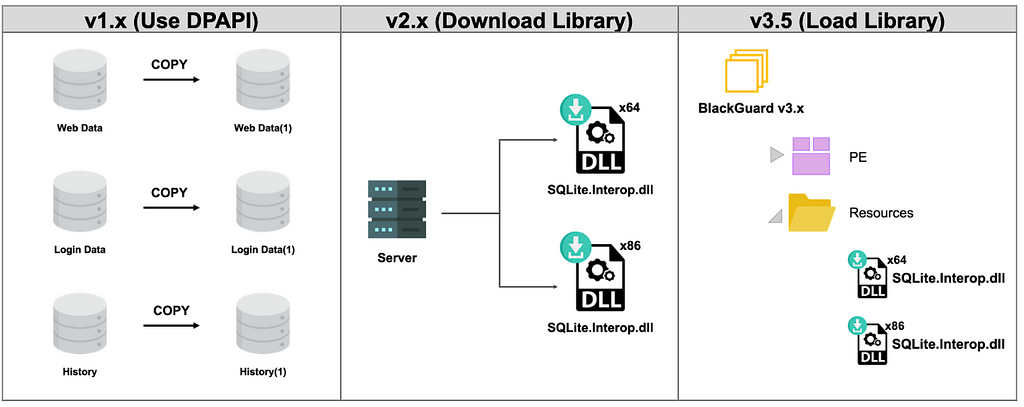
Data collection by BlackGuard version
- Changes in Target Software
 Red box: Removed from v2.x and v3.5 / Green box: Added in v2.x and v3.5
Red box: Removed from v2.x and v3.5 / Green box: Added in v2.x and v3.5In BlackGuard v1.x, infected device information such as OS version, IPv4, and the country was collected as much as possible, but in v2 and later, the redundant or unnecessary data was excluded. In particular, after v2, wallet extension on the browser and some FTP software and Messenger, which were not collected in the early version of BlackGuard, have been added to the target items, and BlackGuard version information is additionally saved when collecting infected devices. In addition, stealing of ProtonVPN and Steam credentials has been completely excluded since v2, and credit card information in the browser was also excluded from the target.
The table that organizes the collected data changed according to the BlackGuard version by type is as follows. The table below summarizes the changes in collected data by type.
The details of the items BlackGuard collects are as follows.
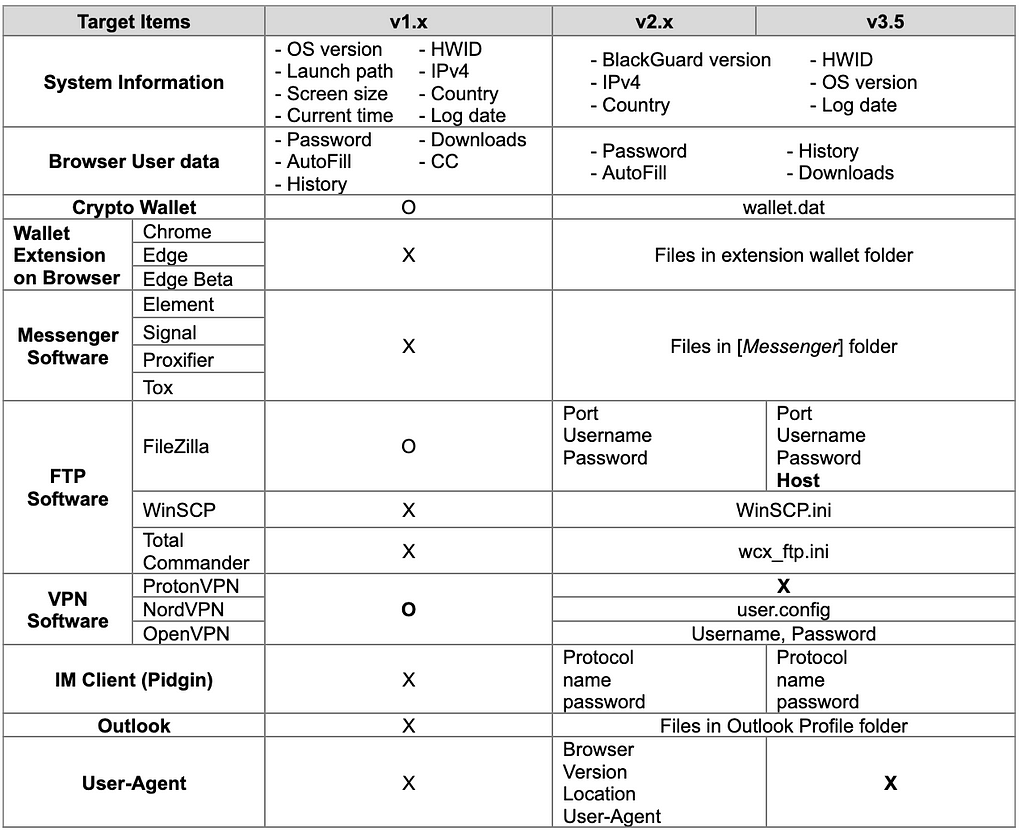
Total Commander data not collected due to coding error
BlackGuard also collects information related to Total Commander (GHISLER) from v2 onwards, but it was not performed successfully as a result of code analysis.
After creating the GHISLER folder, BlackGuard tried to copy the wcx_ftp.ini file from the Total Commander installation path to the GHISLER folder. However, due to incorrect code writing, the files related to Total Commander are not collected successfully because the parameters are set incorrectly in the process of copying the Total Commander file. This appears to be a coding error of the BlackGuard Stealer operator, and as a result of actual testing, it was confirmed that information related to Total Commander was not normally collected.
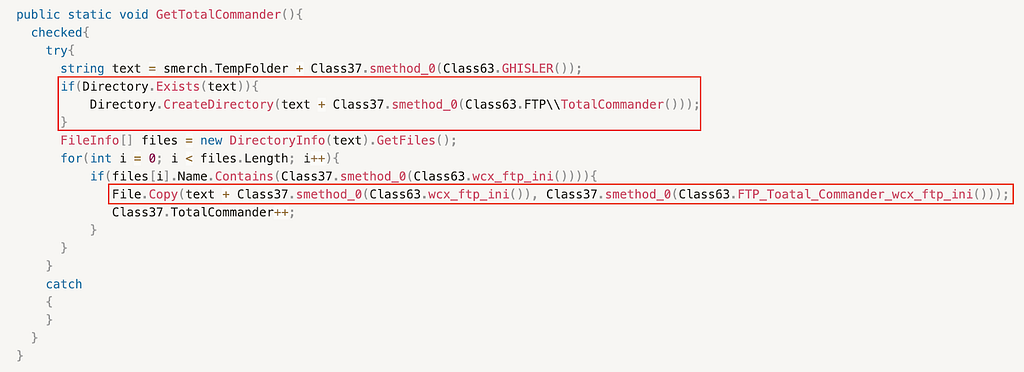
2. Target Browser for Credential Collection
As the BlackGuard version was updated, credentials of Edge Browser were also added in v2.x and v3.5.

In addition, v2.x and v3.5 have been changed to separately collect and store cookies and passwords in each browser. v2 and v2.4 have different target browsers, and v2.4 and v3.5 have the same target browser.


3. Crypto Wallet
Compared to BlackGuard v1.x, v2.x and v3.5 have also changed the list of Crypto Wallets they collect. As the version was updated, some wallets were added and Coinomi was excluded from the list.

4. Wallet Extension on Browser
BlackGuard v2.x and v3.5 steal wallet data files in the wallet extension installation folder on Chrome, Edge, and Edge Beta. The list of target wallet extensions collected by BlackGuard v2.x and v3.5 is the same.

5. Changes in collected data
BlackGuard Stealer collects infected device information and various types of credentials, stores them in a folder created temporarily, and separately stores the number of collected information. The items commonly collected regardless of the BlackGuard version are shown in the table below.
- Commonly Collected Items

- The target items collected for each version
There are some differences in the target items collected depending on the version. Compared to v1.x, which is the early version of BlackGuard, in v2.x and v3.5, wallet extensions on browsers, Messenger software, FTP software, IM client, and Outlook information are additionally collected. It was also confirmed that Steam-related information and ProtonVPN information are no longer collected.
The figure below compares the items collected by BlackGuard v1.x and v2.x~v3.5.
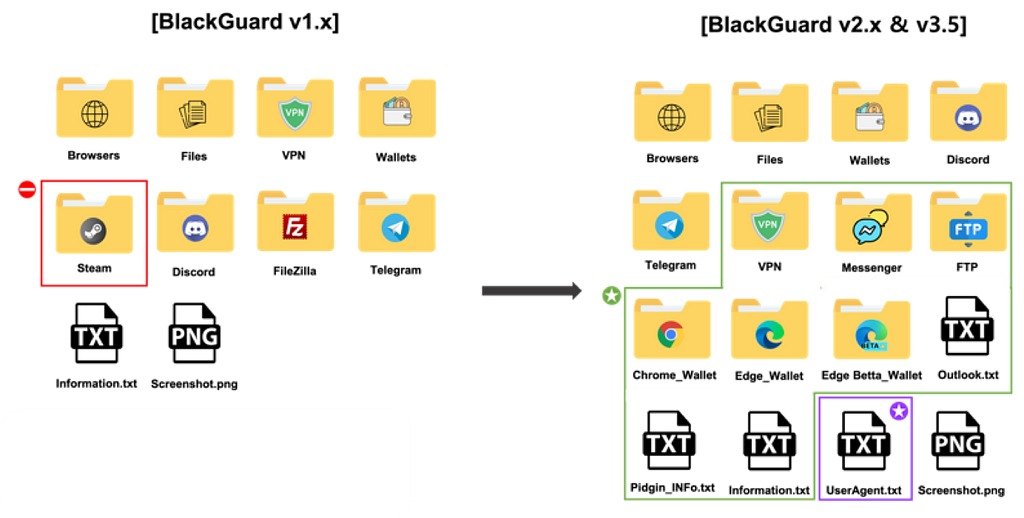 Red box: Removed from v2.x & v3.5 / Green box: Modified from v2.x & v3.5 / Purple box: Modified from v2.x
Red box: Removed from v2.x & v3.5 / Green box: Modified from v2.x & v3.5 / Purple box: Modified from v2.xInformation.txt
In BlackGuard v2.x and v3.5, BlackGuard version information was added to Information.txt, and the current date, which is a duplicate value with the log date, and information related to screen size, which are relatively low in importance, were deleted.

Changes in C2 Communication
BlackGuard Stealer compresses the folder where the collected data is stored and transfer it to the C2 Server. There is a difference in the C2 communication method from BlackGuard v1.x and v2 and later.
- BlackGuard v1.x
Early versions of BlackGuard utilize Telegram Bot API to transfer compressed files to C2 Server. When all information is collected, the compressed file is leaked using the bot token hard-coded in the BlackGuard through the POST method.
- BlackGuard v2.4 & v3.5
The updated BlackGuard uses a hard-coded C2 URL instead of Telegram Bot API. The compressed folder is transferred to C2 Server through WebClient.UploadFile() function and POST method.
The table summarizing the C2 communication methods for each BlackGuard version is as follows.
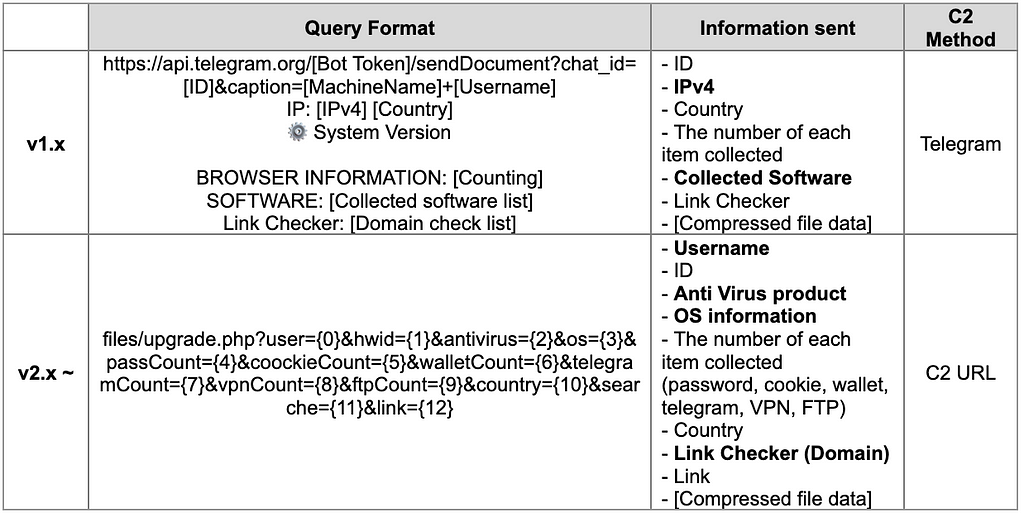
Conclusion
- BlackGuard Stealer has been very active on the forums since its appearance in March 2021.
- It is estimated that the development continues, and the feedback from users is reflected immediately, such as expanding the target items and deleting low-importance targets.
- Considering the type of credential to be collected and the fact that it has been actively distributed recently, it seems that there is a possibility that it will develop into a high-impact Stealer malware such as Redline, Vidal, Raccoon, and Ficker Stealer, however, in reality the code is not as good as we think and outdated.
- He is currently under a lot of criticism and we will continue to monitor what BlackGuard opeartor will do in the future.
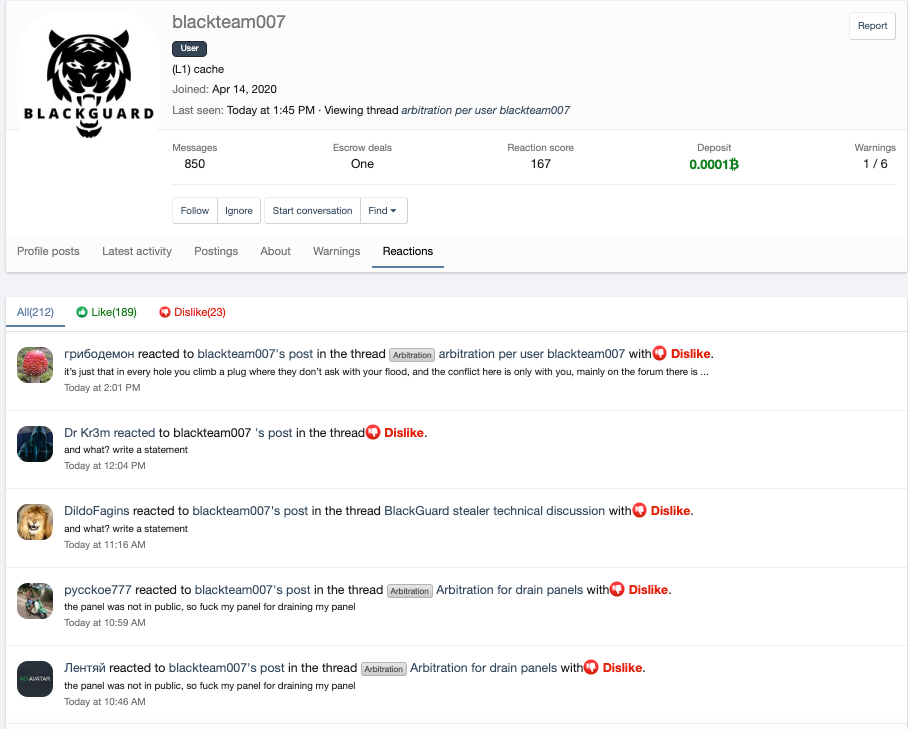
Appendix. A: IoCs
Sample Hash
- 67843d45ba538eca29c63c3259d697f7e2ba84a3da941295b9207cdb01c85b71
- 3d3de136d6a22e6064a306452dab72dc70493b02f8f4a505f00bf3dc59e971d3
- 52bd68ea60e7171ed2413cd5292b74ac9872928a1a723405fb73ad57419c5bc6
- 0fc2a7d0dc1a3b0ec547deae8dc296a0b139f94f7f8609c91a8f04a8f939a3e9
- 3c5a8e9820b549a70a353997bbce4fe16956dbab22dedde2f358f0f10930cf44
- 4f4d29507bafc223646d98f5fed78d52dd96caeee2072ff17b15718b45a1811f
- 216c960ac6ef399e7ff33b18c03777237ced76d59ce0f8bb4d5f9a22e85b3bd8
- 352c936eaf45ffd2f99ba2a9e726eaa39af29d4c37a6ad5106849f07aa35896c
- 5293c26f29b4af6bc2f3f74ae1ed93537e6c311a695cc0a6920a635c57383617
- 30023cfbcb45d75e461333e376fde3b053c33de84b88c64ef816c9f77e45b21f
- ba2bc430c4661aab84cf7e8fedf2684e5fc106f7797af4553aef7490193b00a6
- d888dafb1f2ae06311d507e5d3dfa41c851df2175e8441255e2095c09a058d0a
- 7976a7aa5618c833edfebdbc29853c2f433ce1095a752a177deb76d7f68188be
- bbc8ac47d3051fbab328d4a8a4c1c8819707ac045ab6ac94b1997dac59be2ece
- 4d66b5a09f4e500e7df0794552829c925a5728ad0acd9e68ec020e138abe80ac
- 7f2542ed2768a8bd5f6054eaf3c5f75cb4f77c0c8e887e58b613cb43d9dd9c13
- bee035da35ac47830dd70acb3346992a76afa40433e13539883d82114fa94116
- b287dcb70b7a9ed7025171572a96f1447efa6adf88cd30aba591270052acfe8b
- da5fdea2780ff2e36a3594283a24846c19953daf03063a875073deecc183c3ff
- 5b8d0e358948f885ad1e6fa854f637c1e30036bc217f2c7f2579a8782d472cda
- 15fc2939e2e67f1317f2e549b8214e83b8e1c493d94eeff2cf4a1cf58b94274f
- 18db274624914ee6388bda20233db28307be4873bc053e05ad8f6761b217136f
- 26ebf8a0830652c9ea0de64dc0dca6d62caffc0aaa34abf43e7c410095c502ce
- 76b90299713b5d4ffd3c92b2cd66b3de68148c3133f927dfa385b075fd00d5b1
- 62416ed5c114e347643b51879ee8a75e8a871ab7c02679402f99aaf697e9f9e8
- c5c1a48c0062e113389988d4c70dbcc1a594da3b516dfe14185e622b9050b649
- d3b27ba36d01a6ed5492d662c20b38569b0019c29fe065e8f810b369fba76531
- 5ce632f1f10c96a7524bf384015c25681ef4771f09a6b86883a4da309d85452a
- 918af1137f069eccc04220c280e13ed440a380aa0446cfa1d80b4e0ade6c3528
- 9fff9895c476bee0cba9d3e209e841873f1756d18c40afa1b364bd2d8446997c
- c1237d0e517abc7cd15bb55110196247b1f6ec397c28b8b2bdfba86dc5c8805f
- 3f36af60743bfb923246e36bb860ff9021986c9e88c5a4176b67a4d0923125b8
- f2d25cb96d3411e4696f8f5401cb8f1af0d83bf3c6b69f511f1a694b1a86b74d
- 31e0abc1e5c117f3c4d07b7ec1d876118d7c8830565820ad9eca3573382f49b0
- c98e24c174130bba4836e08d24170866aa7128d62d3e2b25f3bc8562fdc74a66
- f47db48129530cf19f3c42f0c9f38ce1915f403469483661999dc2b19e12650b
- 31c4edabd35f8a9d0695c96f21acd8787eec68b8028973470d64c4956d9f1cd1
- 3335f6aff82ff30e3aa29e0cb487be0252ab7b6cf7fcbb074c5642c1f0d7d0c0
- 5aa891744286c1a5d60e408b1799bf8fceaba51c75dde12d62ee1ec56941fadf
- 55ddb7ab485a2bf4aa65ad404ee9bbbf726ff1361e95a098d514e700ab9ffa6b
C2 URL
- https[:]//api[.]telegram[.]org/bot1068601339:AAGUm6n8fS0wwbMhDzm8XXbjUYb6Vb9–64Q
- https[:]//api[.]telegram[.]org/bot1625195044:AAHK-2Z52Nk0cJXJ-G7Ad1kKnmzwMberIVU
- https[:]//api[.]telegram[.]org/bot1822617155:AAF5DW4sJVsYGItkXWeX3elycmmu-6nOK8g
- https[:]//api[.]telegram[.]org/bot1840568117:AAGlvKQeSfXkObSE7__yYc5jM9o8qSrkFUw
- https[:]//api[.]telegram[.]org/bot2113738307:AAEFFkU5zCHejtwoMag2cI5zpW4JKy8A5jI
- https[:]//api[.]telegram[.]org/bot2029788337:AAH5_pYeay9X4P5MpT2OjpO_WEdpwJdVhb4
- https[:]//api[.]telegram[.]org/bot2088622057:AAHBeaoCOwatBAei8rEaCpsgBnxT3LGE5eM
- https[:]//api[.]telegram[.]org/bot5000057429:AAGzxzARC3DPcOsfaw0jKHEyHfyEfZqVYQM
- https[:]//blguard[.]shop/
- https[:]//greenblguard[.]shop/
- https[:]//umpulumpu[.]ru/
- https[:]//onetwostep[.]at/
- https[:]//win[.]mirtonewbacker[.]com/
- http[:]//funkyjazz[.]me/
- https[:]//ritmflow[.]online/
- http[:]//185[.]173[.]157[.]26/
- http[:]//79[.]141[.]162[.]7/
Appendix. B: MITRE ATT&CK MATRIX
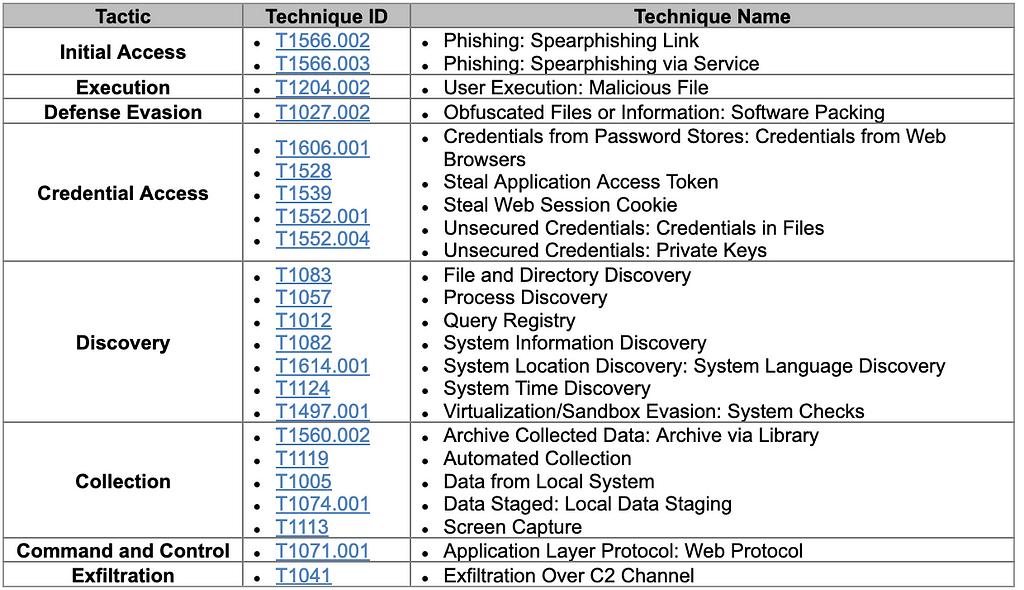
P.S. Thank you for the feedback, BlackGuard

The History of BlackGuard Stealer was originally published in S2W BLOG on Medium, where people are continuing the conversation by highlighting and responding to this story.
Article Link: The History of BlackGuard Stealer | by S2W | S2W BLOG | Medium